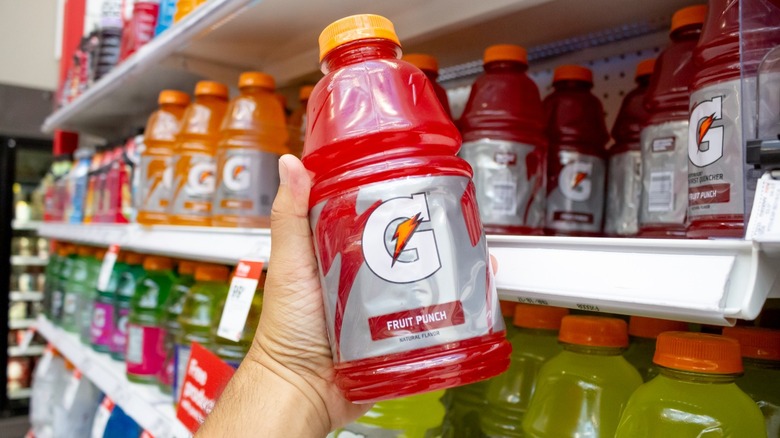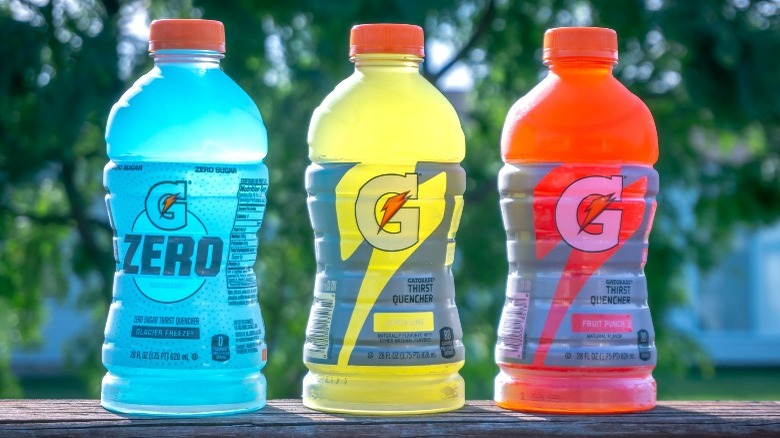Is Gatorade Actually Good For You?
If you love Gatorade, you're not alone. According to a 2018 survey, over 50% of adult Americans between 18 and 64 years old reported drinking Gatorade within the past month (via Statista). Of all the sports drinks available, Gatorade wins the prize for most popular, snagging 72% of the market share of retail sales in 2020 (via CNBC).
Gatorade was invented in 1965 at a University of Florida lab. Scientists were looking for a way to invent a beverage that would quench the thirst of athletes and provide them with salts and sugar they lost due to exertion in the heat. Early versions of Gatorade — named for the University of Florida mascot — reportedly tasted awful and players got sick when they drank it. But over time, the flavors evolved and improved and, by 2015, the scientists who invented Gatorade enjoyed over $1 billion in royalties (via The History Channel).
Even though the drink was developed with science in mind and is the favorite of many pro and amateur athletes, there are downsides to Gatorade that you should keep in mind.
Here's what's in Gatorade
First, the good news about Gatorade. The experts at Healthline point out that when we exert ourselves during workouts, we lose electrolytes, which are minerals that help your body maintain its ionic balance. Electrolytes include sodium, potassium, calcium, and magnesium, among others. By providing electrolytes and carbohydrates, Gatorade can help regulate your body's balance of fluids, provide energy, and rehydrate your body after you engage in vigorous activity for longer than an hour.
The bad news about Gatorade is that it is packed with sugar. Healthline reports that a 20-ounce serving can contain 36 grams of sugar. This high sugar content can lead to tooth decay or weight gain. It can also increase your risk of high blood pressure due to the sodium content. Additionally, Gatorade contains artificial coloring, which can make children hyperactive.
If you're looking to swap out Gatorade once in a while for a healthier alternative, but still want to replace electrolytes, you have several options. Since you primarily lose sodium and potassium following intense exercise, one easy way to replace these is through food. To replace potassium, go for a banana, orange, or leafy green vegetables. You can get your sodium levels up through easily available foods such as green olives and crackers. However, if you'd rather replace Gatorade with another liquid, try coconut water, low-fat chocolate milk, or electrolyte-enhanced water that offers 160 milligrams of sodium and 45 milligrams of potassium in each 12-ounce serving (via Livestrong).


